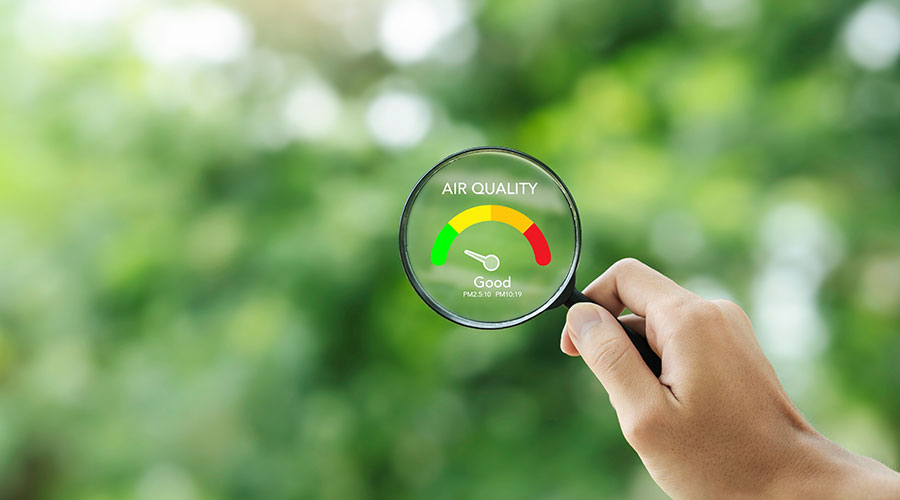Carbon Dioxide Testing Vital to Prevent IAQ Problems
In seeking to prevent IAQ problems in facilities, it is important to test for CO2 because inside air contains more CO2 than outside air, due mostly to human exhalation, combustion-gas leaks, and some intake of outside vehicle exhaust from traffic and parking lots. HVAC systems recirculate some inside air to save energy. To ensure proper air ratios, CO2 testing is done. The standard test is to bubble the suspect gas sample through a dilute solution of calcium hydroxide. Calcium hydroxide and CO2 combine to produce calcium carbonate, which turns the solution cloudy, if CO2 is present.
There are also a number of CO2 meters and sensors on the market, both portable and fixed. One meter has an audible alarm and lights that indicate less than 4,500 parts per million (ppm), 4,500-5,000 ppm, and more than 5,000 ppm, which is OSHA's allowable limit. Outside air usually contains about 350-400 ppm of CO2, so diluting it with cleaner outside air is an effective tactic for ensuring healthier CO2 levels.
Technicians can calculate air velocity by using air-velocity pressure, or they can measure it directly in feet per minute with a hot-wire anemometer for low velocity, a rotating or swing anemometer, or a variable-area flow meter. They can multiply velocity by the cross-sectional area of the duct in square feet to convert it to cubic feet per minute (cfm).
Determining proper cfm is crucial. Engineering handbooks recommend air changes in cfm for various building areas, such as auditoriums, classrooms, hospital patient rooms, offices, and restrooms. Also, intake and exhaust fans are rated in cfm so proper airflow can be designed into a building's HVAC system. Instruments are calibrated regularly against a primary cfm standard, such as a hook gage or micromanometer, and some manufacturers also offer recalibration.
Laboratory fume-hood monitors can synchronize exhaust and makeup air to ensure constant pressure. Beyond these benefits, energy-saving zone-pressure controls, or usage-based controls, are also available, so a fume hood can have a turndown ratio of 20 to 1 to save energy while meeting mandates for pollutant removal. Hood-face velocity also can be safely reduced from 100 feet per minute to 60 feet per minute when no occupants are present, generating a further energy reduction of 40 percent.
Related Topics:















